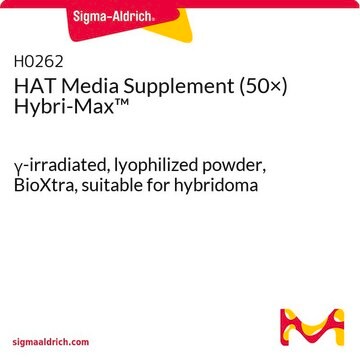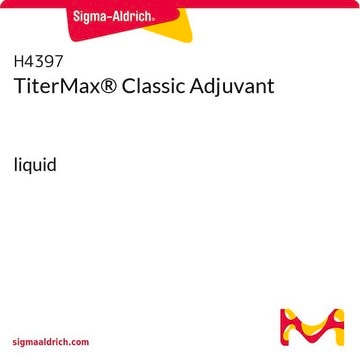P2870
Pristane
synthetic, ≥98% (GC)
Synonym(s):
Norphytane, 2,6,10,14-Tetramethylpentadecane
About This Item
Recommended Products
biological source
synthetic
Quality Level
assay
≥98% (GC)
form
liquid
mol wt
268.5
storage condition
(tightly closed)
color
colorless
refractive index
n20/D 1.438 (lit.)
bp
68 °C/0.001 mmHg (lit.)
solubility
hexane: miscible 10 % (v/v)
density
0.783 g/mL at 20 °C (lit.)
storage temp.
room temp
SMILES string
CC(C)CCCC(C)CCCC(C)CCCC(C)C
InChI
1S/C19H40/c1-16(2)10-7-12-18(5)14-9-15-19(6)13-8-11-17(3)4/h16-19H,7-15H2,1-6H3
InChI key
XOJVVFBFDXDTEG-UHFFFAOYSA-N
Looking for similar products? Visit Product Comparison Guide
General description
Application
It is commonly used for priming animals, leading to granulomatous inflammation and disruption of local lymphatic drainage, resulting in increased ascitic yields. It has been used to induce systemic lupus in mice
Features and Benefits
Other Notes
signalword
Warning
hcodes
Hazard Classifications
Eye Irrit. 2 - Skin Irrit. 2
Storage Class
10 - Combustible liquids
wgk_germany
WGK 3
flash_point_f
>230.0 °F - closed cup
flash_point_c
> 110 °C - closed cup
ppe
Faceshields, Gloves, Goggles, type ABEK (EN14387) respirator filter
Certificates of Analysis (COA)
Search for Certificates of Analysis (COA) by entering the products Lot/Batch Number. Lot and Batch Numbers can be found on a product’s label following the words ‘Lot’ or ‘Batch’.
Already Own This Product?
Find documentation for the products that you have recently purchased in the Document Library.
Customers Also Viewed
Articles
Cancer research has revealed that the classical model of carcinogenesis, a three step process consisting of initiation, promotion, and progression, is not complete.
Our team of scientists has experience in all areas of research including Life Science, Material Science, Chemical Synthesis, Chromatography, Analytical and many others.
Contact Technical Service








